Mealtime Partners, Inc.
Specializing in Assistive Dining and Drinking Equipment
March 2012 Independent Eating and Drinking Newsletter
 |
March Topics:
|
||
|
Mealtime Partners Home Page Send a Comment or Suggestion |
|||
Answers to Questions about the Front Mounted Drinking System
In our January 2012 Newsletter we described the Front Mounted Drinking System, however it has been brought to our attention that even though considerable information was provided about the product itself, no specific guidance was provided as to how to select a location on a wheelchair where the drinking system should be mounted. Along with selecting a mounting site is the decision of the length of the Flex Arm that should be chosen as they come in lengths ranging from 6 to 30-inches. The following information is provided to aid in making those decisions.
When choosing any equipment, the abilities of the person who will use it should be thoroughly evaluated prior to selecting the specific equipment. When deciding which Front Mounted Drinking System to purchase, the factors that should be considered are the user’s ability to suck and the type of straw that they are comfortable drinking through. Whether the person is able to drink safely with their head turned to the left or right, or if they need to have their head facing forward and positioned to produce a chin-tuck, should also be considered. Next the range of movement that the person is comfortable moving their head, neck and trunk should be assessed. For example, if they can move their head and shoulders forward six inches, or if they have good lateral head movement (side to side) but can only move their head forward two inches, etc. This provides the necessary information to locate how far away from the individual’s mouth the cup holder can be placed. To determine this, measure from where the person’s lower lip is when they are in the “ready to drink” position, and then add the length of the straw. Next, subtract three inches from this length to determine the distance that the cup holder should be from the person’s mouth.
Using this information, decide where the cup holder can be located relative to the person’s forward facing position. If a chin tuck is required, the Cup Holder should be positioned in front of the user. But, if the person is able to move their head to the left or right and still safely swallow liquids, then the cup hold can be positioned left or right of their body’s mid-line, moving it somewhat out of their way.
The most appropriate location to clamp to the wheelchair can be determined once the Cup Holder’s position is known. Each wheelchair, and the person sitting in it is different so this is a judgment call based on observing what parts of the wheelchair that can be clamped to that do not interfere with the person’s body, arms, hands, and legs. In many cases it is quite obvious where the clamp should be attached to the wheelchair, but in some cases it is not as easy. If no obvious locations are found begin the search for the best sight by looking at the chair from the top to the bottom. Could the clamp be attached to one of the handles of the wheelchair without interfering with the user?
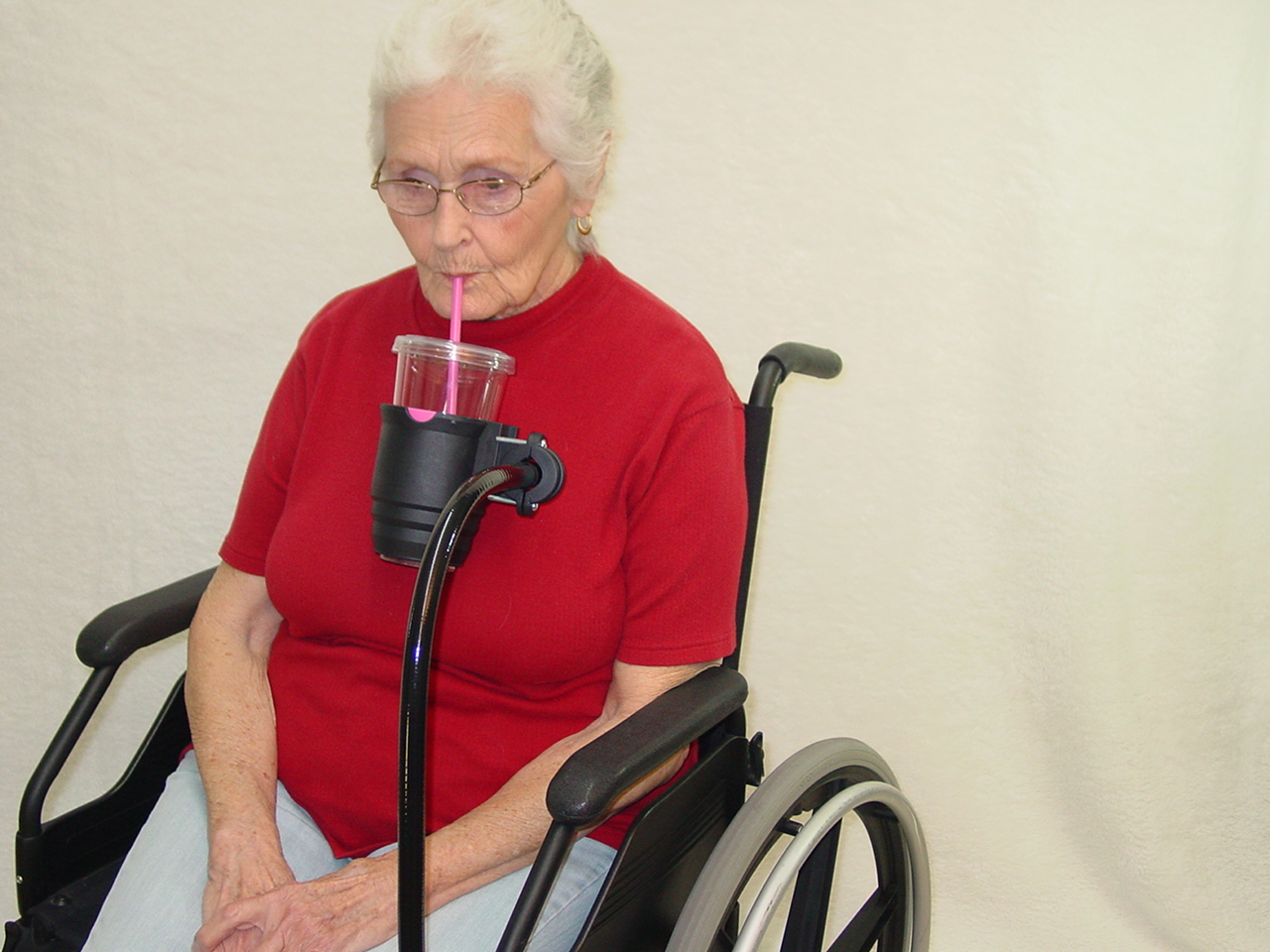 |
| The Cup Holder is Positioned to Facilitate the User Producing a Chin Tuck |
The next step is to measure the distance from the handle to where the cup holder sight will be (as established above). Always allow plenty of room to curve the Flex-arm in a way that will not touch or impede the person in the chair. Flex Arms are provided in various lengths in six inches increments. When choosing the appropriate Flex Arm, always select the next longest length from the measurement you have taken. A little extra bend can remove any excess length.
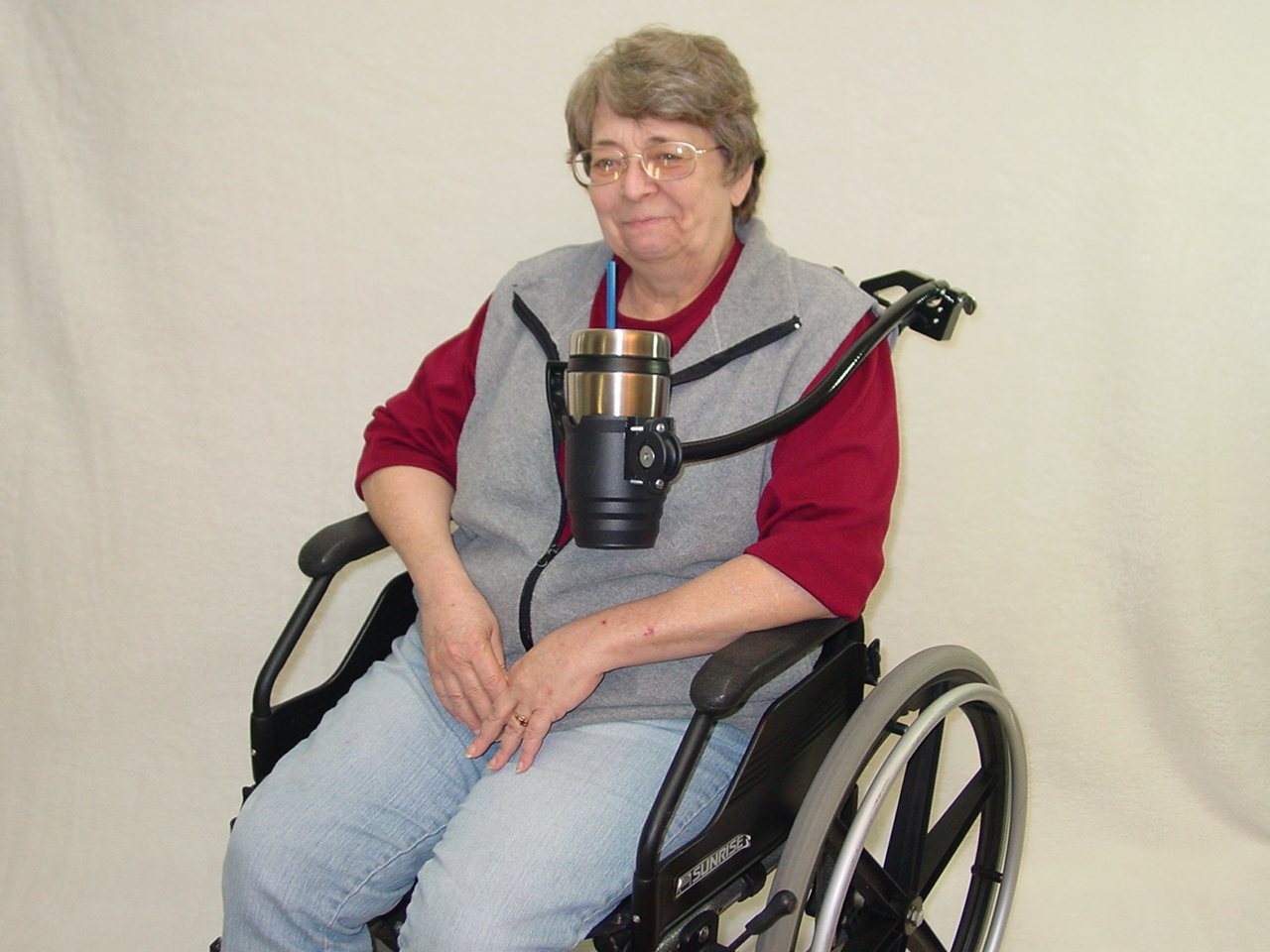 |
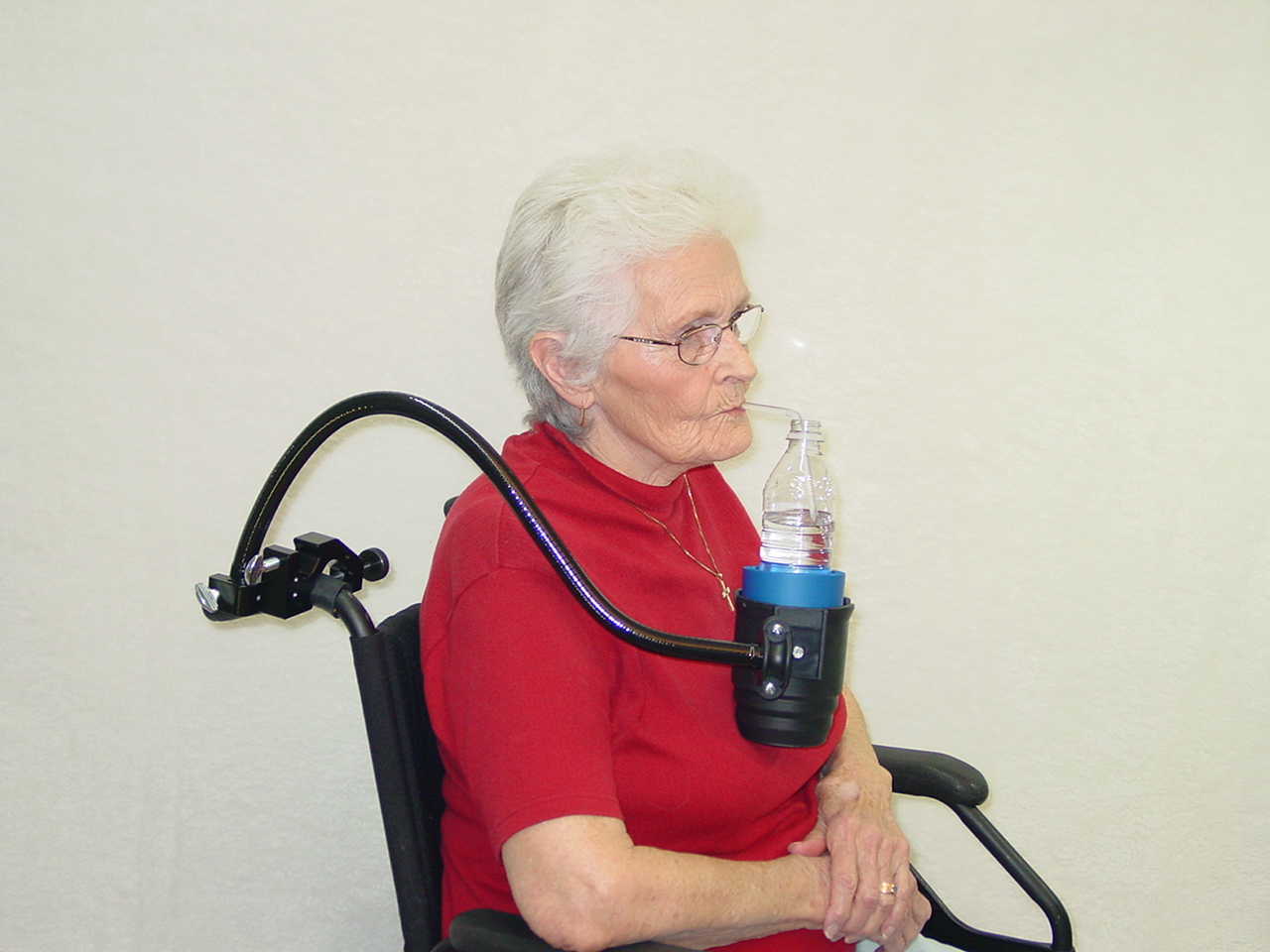 |
| For Individuals who have significant range of motion the cup holder can be positioned farther from their mouth. | 18-Inch Flex Arm Positions the Cup Holder Comfortably In Front of the User. |
Another example of determining the length of the Flex Arm is for a clamp site on the front of the wheelchair. When considering locations around the wheels or brake, make sure that the clamp will not interfere with them. Also, make sure that the clamp does not stick out from the side of the wheelchair and get in the way of going through doors, etc. Once the clamp location is selected measure from that location to where the cup holder will be, add enough length to curve the Flex Arm to position the cup holder and then select the appropriate length Flex Arm.
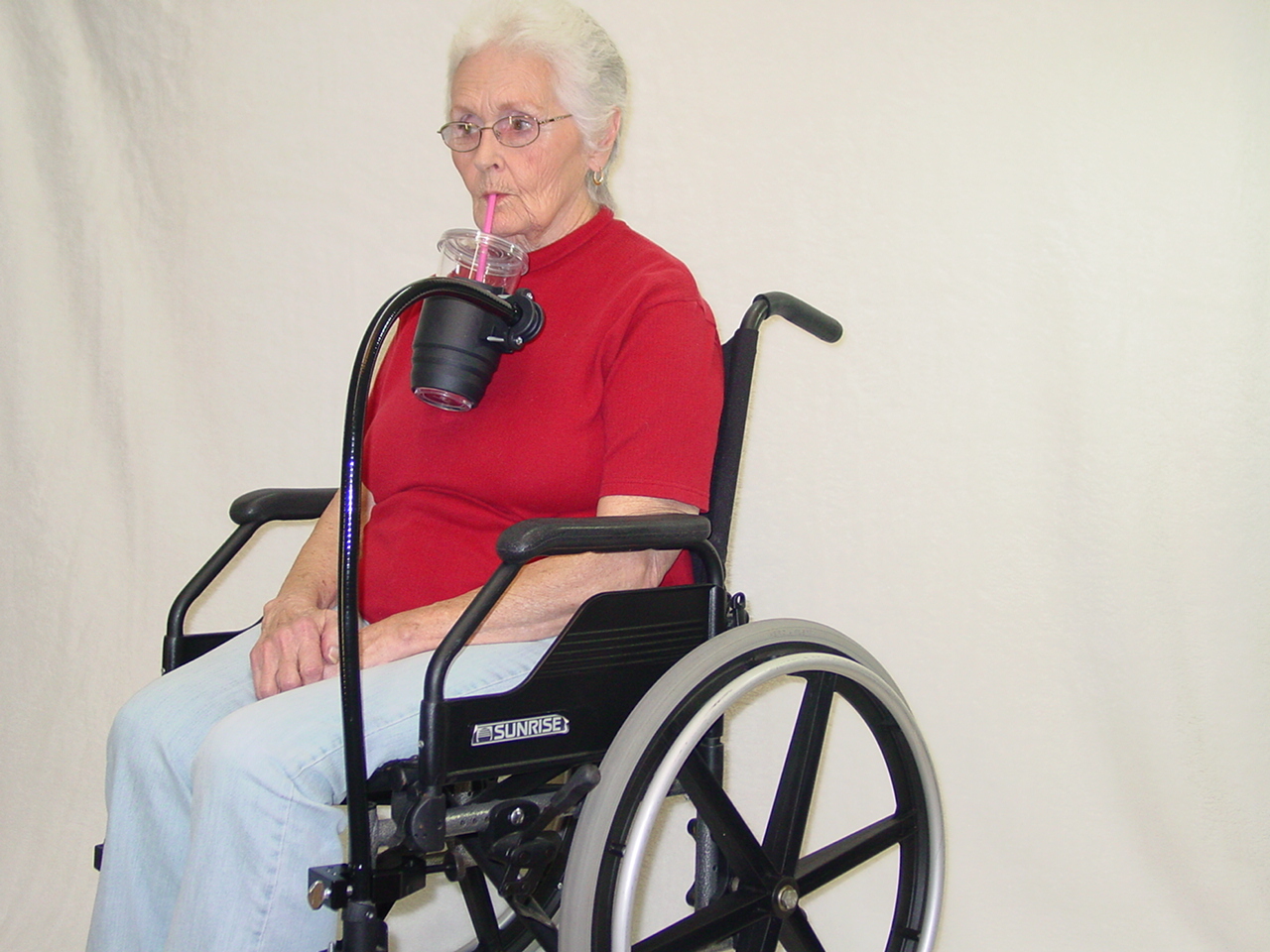 |
| 30-Inch Flex Arm Clamped to the Front of the Wheelchair |
Some questions also arose about the types of drinking containers that can be used in the Front Mounting Drink Holder. The Drink Holder can accommodate large cups and mugs, and, using the provided Koozie, can also accommodate standard 12 oz. soft drink bottles and cans. Some photographs of different cups and bottles in the Cup Holder can be seen in the January 2012 Newsletter article: the Very Versatile Front Mounted Drinking System.
It is always advisable to use a drinking container that has a lid. This provides two advantages. It reduces the risk of spillage should the cup holder get knocked, and it helps to hold the straw in a stable position for the user to easily access it.
This drinking system, by its nature, is positioned directly or partially in front of the user. Because of its close proximity to the user it is generally advisable to take it off of the wheelchair when the user wishes to get in or out of the chair. To facilitate this being quick and easy, the wheelchair clamp that comes with the Front Mounted Drinking System can easily be released and reattached. No tools are needed. The same comment applies to removing and reinstalling the Flex Arm from the Wheelchair Clamp.
If you have other questions about this, or any of our other drinking systems please email us at: drinkingsystems@mealtimepartners.com.
A Glossary of Terms Frequently Associated with Eating and Drinking
On the topic of assistive technology that relates to independent eating and drinking, and in the broader topic of eating and drinking in general, there are some terms that may not be commonplace, or that might be misunderstood. Thus we hope that you will find the following information useful.
MEALTIME PARTNER – A mealtime partner is a family member, friend, or other caregiver that feeds another person who lacks the ability to self-feed. By their action, they have become the partner of the person who is eating, at least, for that meal. The Mealtime Partner Dining Device was named after these individuals as it can become the person’s partner instead of them having another person feed them. Mealtime for those who are unable to eating independently must, by default, be a partnership. If they do not have someone to assist them they will not get food. A mealtime partner, whether it is a person or an assistive device, should allow the individual who is eating to have a pleasant dining experience.
FEEDING DEVICE – An internet search reveals that feeding device is a term that predominately refers to devices that feed animals or fish, relates to breast feeding, or is a piece of equipment that feeds ammunition into a weapon. In the assistive technology world a feeding device is a piece of equipment that facilitates independent eating for someone who is weak or lacks coordination in their upper limbs that is adequate to feed oneself in the traditional manner. There are several feeding devices commercially available in the United States (U.S.). They can be divided into two categories: powered, and non-powered. Currently, there are four non-powered feeding devices on the market. They provide stabilization and support for individuals who have tremors or are weak. The user must have enough strength and hand and arm movement to manipulate the utensil from the bowl or plate to their mouth. There are three powered feeding devices available in the U.S. and a total of six are available worldwide (one in Great Britain, one in Sweden and one in Japan).
Mealtime Partners would prefer that the term dining devices be adopted by everyone to categorize the devices that aid human beings in eating, rather than feeding devices, to avoid any of the negative connotations that may be inferred from “feeders.” The Mealtime Partner Assistive Dining Device, since its inception, has been referred to as a dining device by Mealtime Partners, Inc, and never referred to as a feeding device.
DINING DEVICE – the preferred term for equipment or devices that aid individuals in eating independently.
CHIN TUCK – Even though there is no precise anatomical definition of a chin tuck, in general terms a chin tuck is a head position that places the chin slightly downward towards the individual’s chest. It is a position that can increasing the probability of taking a bite of food, chewing it, and swallowing it safely. For more information on a chin tuck see Mealtime Partners June 2009 Newsletter article: Promoting a Chin Tuck for Safer Eating.
CHOKE – Choking occurs when food, liquid, or a foreign object, passes into the airway instead of going into the esophagus. When choking occurs, air cannot get to the lungs because the trachea is partially or totally blocked by what has “gone down the wrong way”. The result of choking is coughing. Vigorous coughing typically results in the material being coughed back out of the airway, into the mouth. If the airway is not cleared independently then the Heimlich maneuver should be performed. (Instructions on performing the Heimlich maneuver.)
If choking is not resolved, death can result and is caused by lack of oxygen. About 3,000 adults die each year from choking on food.
ASPIRATION – Aspiration occurs when food or liquid that should be swallowed and moved into the stomach are instead breathed into the respiratory system and penetrate below the true vocal cords. Gastric fluids and stomach contents, as well as items being eaten or drunk, can be aspirated into the respiratory system. Regardless of what is inhaled, once material is inhaled into the lungs an infection is likely to develop (because the body rejects foreign objects which results in the development of an infection at the site of the material). The result can be the development of aspiration pneumonia (an infection of the lungs) and is very serious. (Studies have shown that people who are fed are at a higher risk of aspirating than those who self-feed.)
Choking and aspiration differ in the depth that the inhaled material penetrates the respiratory system. When choking, the material is in the upper section of the trachea; when it is aspirated, it penetrates below the larynx (Adam’s apple). Choking can cause death from the inability to breathe when the airway is blocked. Aspiration can also cause death but it occurs more slowly from the inhaled material causing an infection in the lungs.
| Did You Know? Did you know that 1.8 billion prescription medications are dispensed every year in the United States. According to an article by Julie Fumer-Mason published in Today’s Caregiver entitled The Medication Management Challenge, as many as 75% of Americans do not take their medicines as prescribed. This causes 125,000 deaths annually, is responsible for 10% of hospital admissions, and results in 23% of new admissions to assisted living type facilities. It cost the US healthcare system about $290 billion per year. |
| The Mealtime Partner Dining System
empowers those who use it to greater independence and control
over their lives. At mealtimes: |
|
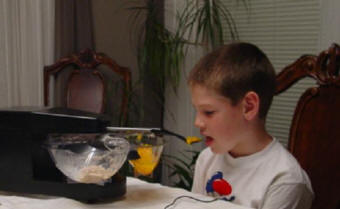 |
| The very versatile Mealtime Partner Dining System can accommodate the diverse needs of individuals who have spinal cord injuries (SCI), Parkinson’s disease, arthrogryposis, cerebral palsy (CP), amyotrophic lateral sclerosis (ALS), and many others. For more information about the benefits of using a Mealtime Partner Dining System, please visit our website. |
| If you have questions please email questions@mealtimepartners.com or give us a call at 800-996-8607, |
Mealtime Partners Website Navigation:
Home | Dining | Drinking | Videos | All Products | Warranty | Ordering | Calendar | FAQ | Newsletters | Contact
Please send comments and suggestions to newsletters@mealtimepartners.com
Copyright © Mealtime Partners, Inc. 2012
All rights reserved.